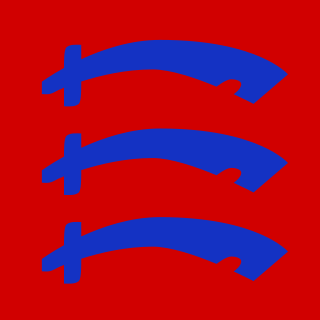The 19th Brigade is an Army Reserve brigade of the British Army. As the 19th Infantry Brigade it fought in the First and Second world wars.
227th Brigade was an infantry formation of the British Army formed for Home Service under various short-lived titles in the First and the Second World Wars. Later it was upgraded to a field formation composed of Scottish troops, and saw heavy fighting in the Normandy and North West Europe Campaign.
The 157th Brigade was an infantry brigade of the British Army. The brigade fought in both the First and the Second World Wars, assigned to 52nd (Lowland) Infantry Division.
The 214th Brigade was an infantry formation of the British Army during World War I. It was raised as a second line brigade of the Territorial Force and initially assigned to the 71st Division for coast defence. Later it was reorganised as an all-arms brigade group for service in North Russia, but this was cancelled and it was reassigned to the 67th Division, a training and home defence formation, until the end of the war.
The 206th Brigade was a formation of the British Army during World War I. It was raised as a 2nd-Line duplicate of the Essex Brigade of the Territorial Force and formed part of the 69th Division. It served as a training formation in the United Kingdom without going overseas.
The 207th Brigade was a formation of the British Army during World War I. It was raised as a 2nd-Line duplicate of the 162nd Brigade of the Territorial Force and formed part of the 69th Division. It served as a training formation in the United Kingdom without going overseas.
The 120th Brigade was an infantry brigade formation of the British Army during World War I. Part of Lord Kitchener's 'New Armies', it served in the 40th Division on the Western Front. In 1918 it was reorganised as the 120th (Highland) Brigade. The brigade number was reactivated for deception purposes during World War II.
The 121st Brigade was an infantry brigade formation of the British Army during World War I. Part of Lord Kitchener's 'New Armies', it served in the 40th Division on the Western Front. The brigade number was reactivated for deception purposes during World War II.
The 222nd Infantry Brigade was a Home Service formation of the British Army that existed under various short-lived titles in both the First and Second World Wars
The 226th Infantry Brigade was a Home Service formation of the British Army that existed under various short-lived titles in both the First and Second World Wars.
221st Mixed Brigade was a Scottish Home Service formation of the British Army that served under various titles throughout World War I.

The 223rd Brigade was a Home Defence formation of the British Army in the First and the Second World Wars. It existed under several variations of the 223 Brigade title, and was eventually converted into an airborne formation.
71st Division was a short-lived infantry division of the British Army during the First World War. It served in the Home Defence forces and never went overseas.
72nd Division was a short-lived infantry division of the British Army during World War I. It served in the Home Defence forces and never went overseas.
73rd Division was a short-lived infantry division of the British Army during World War I. It served in Home Forces and never went overseas.
The 195th Brigade was an infantry brigade of the British Army raised during the Great War. The brigade was part of the Territorial Force and created as a 2nd Line of the 156th Brigade and part of the 65th Division, itself formed as a 2nd Line of the 52nd (Lowland) Division. The brigade was initially composed of four battalions of the Cameronians.
The 194th Brigade was an infantry brigade of the British Army, raised during World War I. The brigade was part of the Territorial Force and formed as a 2nd Line duplicate of the 155th Brigade. Assigned to the 65th Division, the brigade remained in the United Kingdom throughout the war.
The Blythswood Rifles was a Scottish Volunteer unit of the British Army. Raised in Glasgow from 1859, it later became a battalion of the Highland Light Infantry. During World War I it served at Gallipoli, in Egypt and Palestine, in Ireland, and on the Western Front. Converted into an anti-aircraft artillery regiment just before World War II, it served in The Blitz and in the Middle East during the war, and continued in the postwar Territorial Army until 1955.
The Glasgow Brigade was an infantry formation of Britain's Volunteer Force from 1890 to 1902. It was the forerunner of two formations of the Territorial Force that saw service in both World Wars.
The 6th Battalion, Royal Scots, was a unit of Britain's part-time Territorial Force. Beginning as a Volunteer unit formed from teetotallers in the city of Edinburgh in 1867, it later became affiliated to the Royal Scots. During World War I it served in the Senussi Campaign and on the Western Front. Postwar it was converted into a medium artillery battery.
